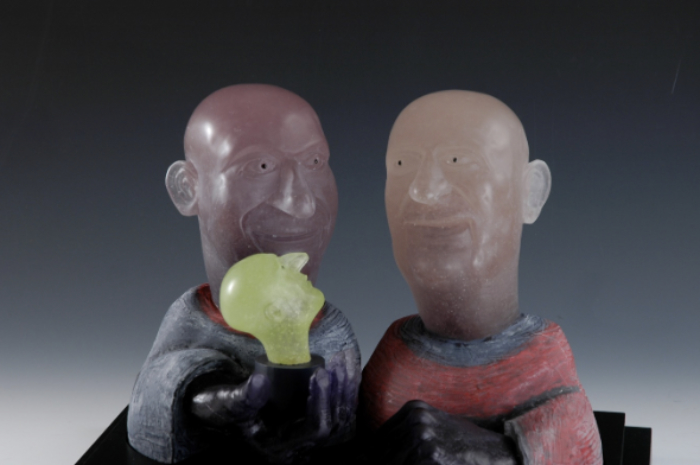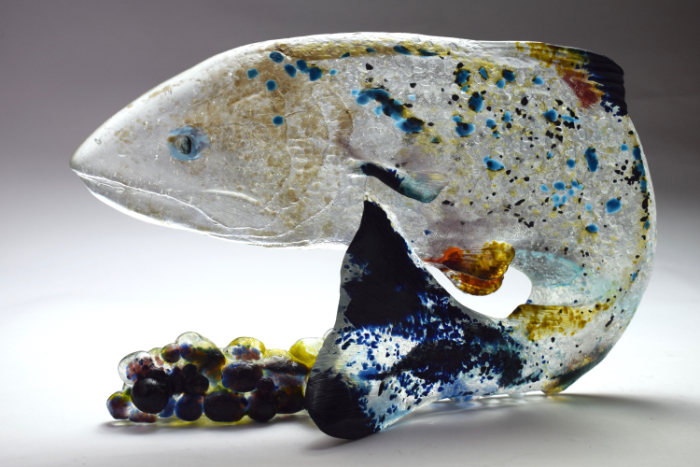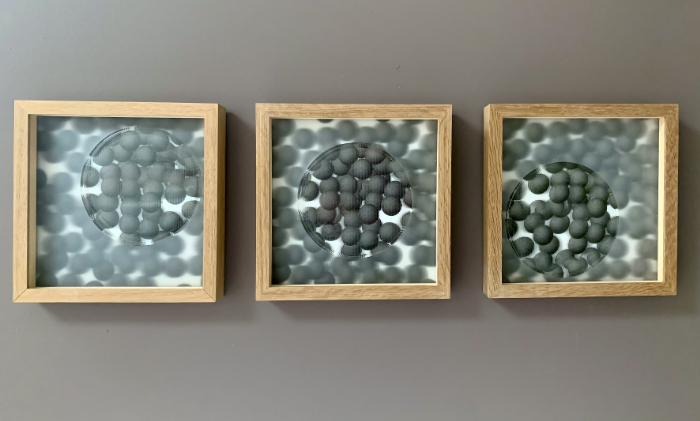
Virtual worlds and lost places
Glass artist Dr Helen Slater Stokes seeks to preserve remembered landscapes and investigate biological and social issues with her contrasting styles of glass art. Linda Banks finds out more about her preoccupation with optical illusions and concepts of space.
What led you to start working with glass?
I was always captivated by glass, in particular looking into and through glass. The notion of capturing perceived spatial depth within glass has always interested me. Ever since I gazed into crystal gardens grown in glass jam jars as a child I have been fascinated by watching these miniature worlds grow behind the distortion and magnification of the glass.
It was these forms or images, behind or within glass, that have always captured my imagination and interest. These surreal, watery worlds held a reference to artefact and capture, through subconscious associations with conservation and preservation. They were also ethereal and dreamlike, appearing otherworldly and poetic. This visual reference to glass as a preservative material, encasing moments, colour, movement, bubbles and imagery, is something I have repeatedly drawn upon within my work.
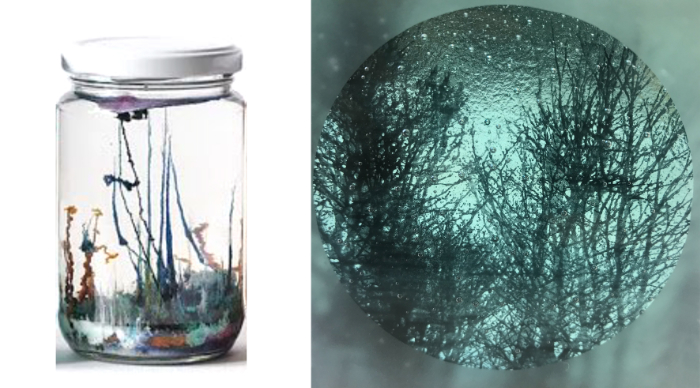
What glass techniques have you used in your career and why do you have a preference for cast glass today?
During my degree course, at Sunderland University, I produced cast, blown and stained glass works. Then later, when working on public commissions, I designed for architectural-scale, toughened and laminated industrial processes. But kiln forming has always been my preferred method of production. Each stage of complex kiln-forming and glass finishing allows for reflection and evaluation, in addition to the methodical processing of the glass. It is this logical, hands-on and time-based production method that affords me the time to analyse and reassess my work continually.
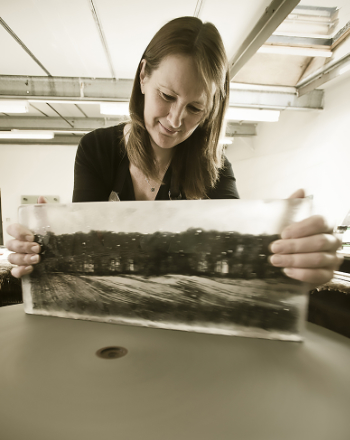
Can you tell us something about your methods? Do you draw your designs out or dive straight in with the materials?
I always start with a drawing, whether that’s a sketchbook drawing of a landscape or a 3D abstract minimal work rendered in pencil or pen. Then this is taken into the digital, sometimes by scanning images into Photoshop, in order to work out composition layouts, or, in the case of my new lenticular designs, fabricating the forms in 3D software before digitally composing and interlacing them, with specialist software. This digital stage enables me to quickly experiment with ideas before taking them into the glass. Finally, I can impact the finished work by employing different kiln-forming processes and glass finishing techniques.
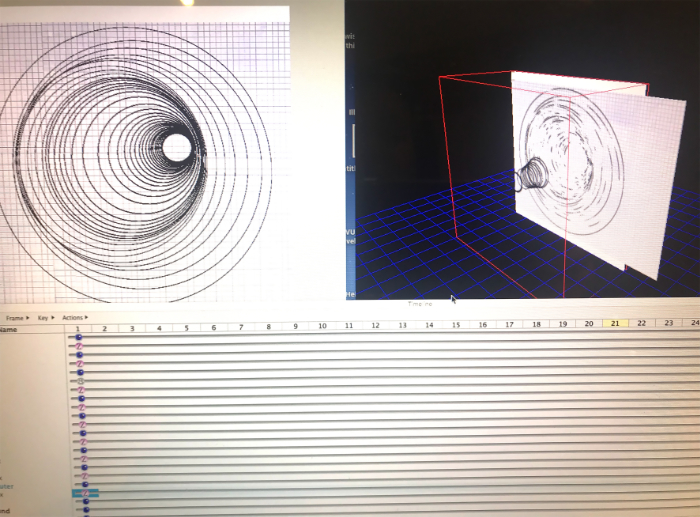
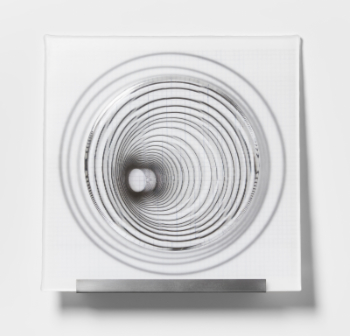
You have a special interest in optical illusions and concepts of space. How have you translated this in your glass work?
Hopefully that interest is obvious to the viewer, as a continuous thread within my work. Glasses’ optical traits are visual characteristics that intrigue me and, as such, are vehicles I exploit a lot. Use of polished surfaces to magnify, or ground surfaces to create visual levels within the glass, are constants. Then I enjoy adding layers of image or depth within the castings themselves, using glass frit, screen printed imagery, or digital ceramic transfers.

But I aim to attach other meanings to this notion of the optical. For example, my landscapes speak of remembered places that have changed or been lost over time, now captured within the glass. My abstract, minimal works, meanwhile, address a different kind of ‘space’: a virtual, almost holographic, mental space that create dialogues around biological and social issues.
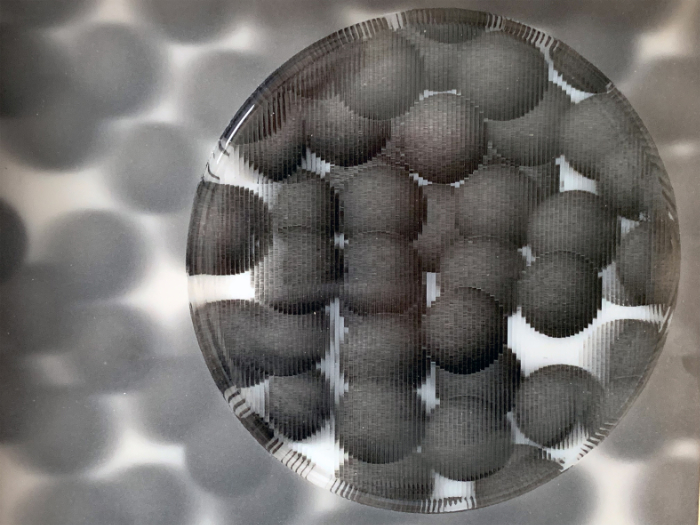
Do you have a favourite piece you have made? Why is it your favourite?
My favourite is usually the last piece I have finished but, looking back, I love ‘Oculus’ and ‘Acuity’. These were my first successful, abstract lenticular glass works, created while researching my PhD. These evidence the culmination of my technical research, as they hold images within that mesh with a glass lenticular lens to facilitate a virtual animated space. Also, Acuity was selected for the British Glass Biennale 2019 and then purchased for the glass collection at The Imagine Museum, in Florida USA. This was a great accolade for the work, as I had visited The Imagine Museum earlier that year, whilst presenting a paper at the Glass Art Society Conference in St. Petersburg, USA. The museum is amazing and I was blown away to have a piece of my work in its collection.
You are also an educator. How do you balance your time between lecturing and creating your glass sculptures?
I have always taught on a part-time basis, so this is something that I have managed over the years. Currently, I am doing less lecturing and focusing on launching the new work resulting from my PhD research. But I do really enjoy teaching. I love working with students and watching their excitement and enthusiasm when learning new techniques. It inspires me to keep pushing my own work forward and to stay informed about new processes and artworks to bring into the mix.
Most of the time, I am working alone in my workshop and then, sporadically, I am in the buzzing atmosphere of the university working with a throng of enthusiastic students. It’s brilliant. I’m very lucky as it’s great for me to have that mix.

What is your favourite tool or piece of equipment and why?
That has to be my reciprolap. This is a lapping machine which is 36 inch in diameter. I run it with 600 silicon carbide grit to flatten and grind glass work. I bought it from His Glassworks, USA, about 10 years ago. It saves me hours of back-breaking hand-lapping, and I can use it for really large casts. It’s a real life saver!
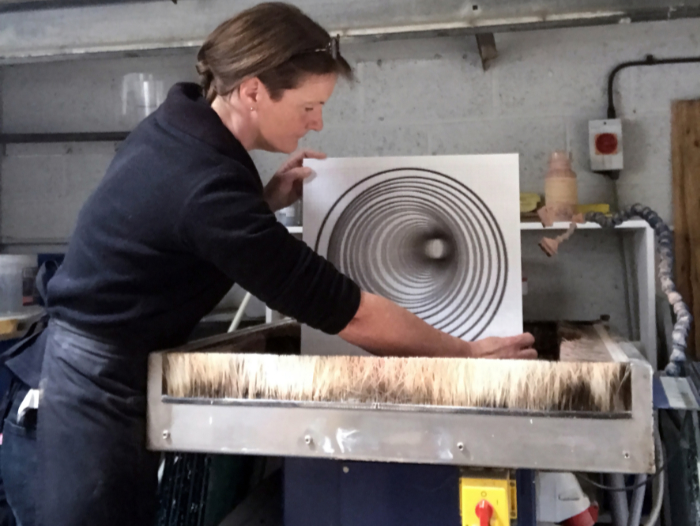
What message do you want to covey to your audience through your glass work?
I guess I want the audience to be captivated by the works and to consider the places and spaces depicted within the glass. This hopefully leaves them to consider, depending on the pieces, places that hold a resonance, issues around the loss of our British landscape, overcrowding and current proximity concerns brought about by the pandemic.
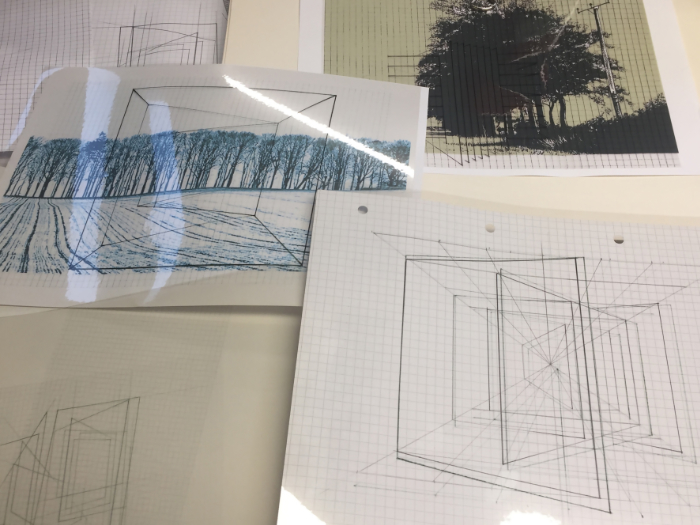
Where do you show and sell your work?
I am represented by a number of galleries, including the Contemporary Applied Arts (London), Artwave West (Dorset), Sarah Wiseman (Oxford), Byard Art (Cambridge), The Biscuit Factory (Newcastle), Torrance (Edinburgh) and Hadfield Fine Art (Gloucestershire).
See my website for more details: https://www.helenslaterglass.com/galleries
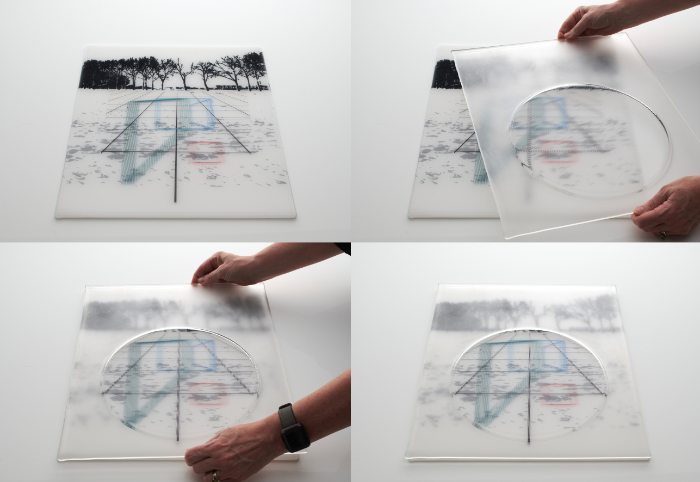
Do you have a career highlight?
My highlight so far is graduating, with a PhD from the Royal College of Art, this year, after over six years of part-time study.
Who or what inspires you?
My father was a constant inspiration to me. He was a fabulous artist and graphic designer, so I was fortunate enough to be supported in my decision to study art and my aim to work as an artist. Then, having discovered glass, I became inspired by glass as a material, with its endless range of possibilities and new innovations. That’s what makes me excited to drive over to my workshop every day to see what has happened in the kiln, or spend hours and hours grinding and polishing a cast.
How has the coronavirus impacted your practice?
I was very lucky. The initial enforced time at home allowed me to reflect and consider new work, as well as preparing for my PhD exam.I worked on lots of ideas digitally and in my sketchbook and, when we were allowed to go out to work, if necessary, I could go over to my workshop. I work alone and have a unit in a block, so it was easy to drive over and simply close the door behind me for the day. Fortunately I had two large commissions on the go to focus on.
Lockdown also allowed me to take time out from what had become a very hectic and pressured schedule of PhD work, gallery pieces and commissions.
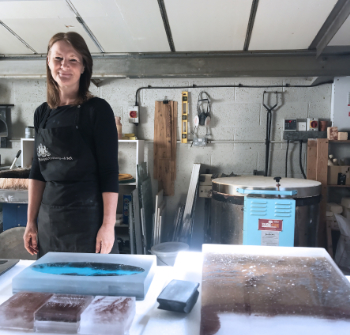
About the artist
Dr Helen Slater Stokes graduated from The Royal College of Art, with a master’s degree in 3D Design: Glass & Ceramics, in 1996. Since then, she has been lecturing and making glass sculpture from her workshop in the Cotswolds.
She completed a part-time PhD by practice, in 2021, at The Royal College of Art, London.
She exhibits internationally and has undertaken public and private commissions.
Find out more via her website: https://www.helenslaterglass.com/
Main feature image: ‘Proximity’ investigates optical illusions and space.
